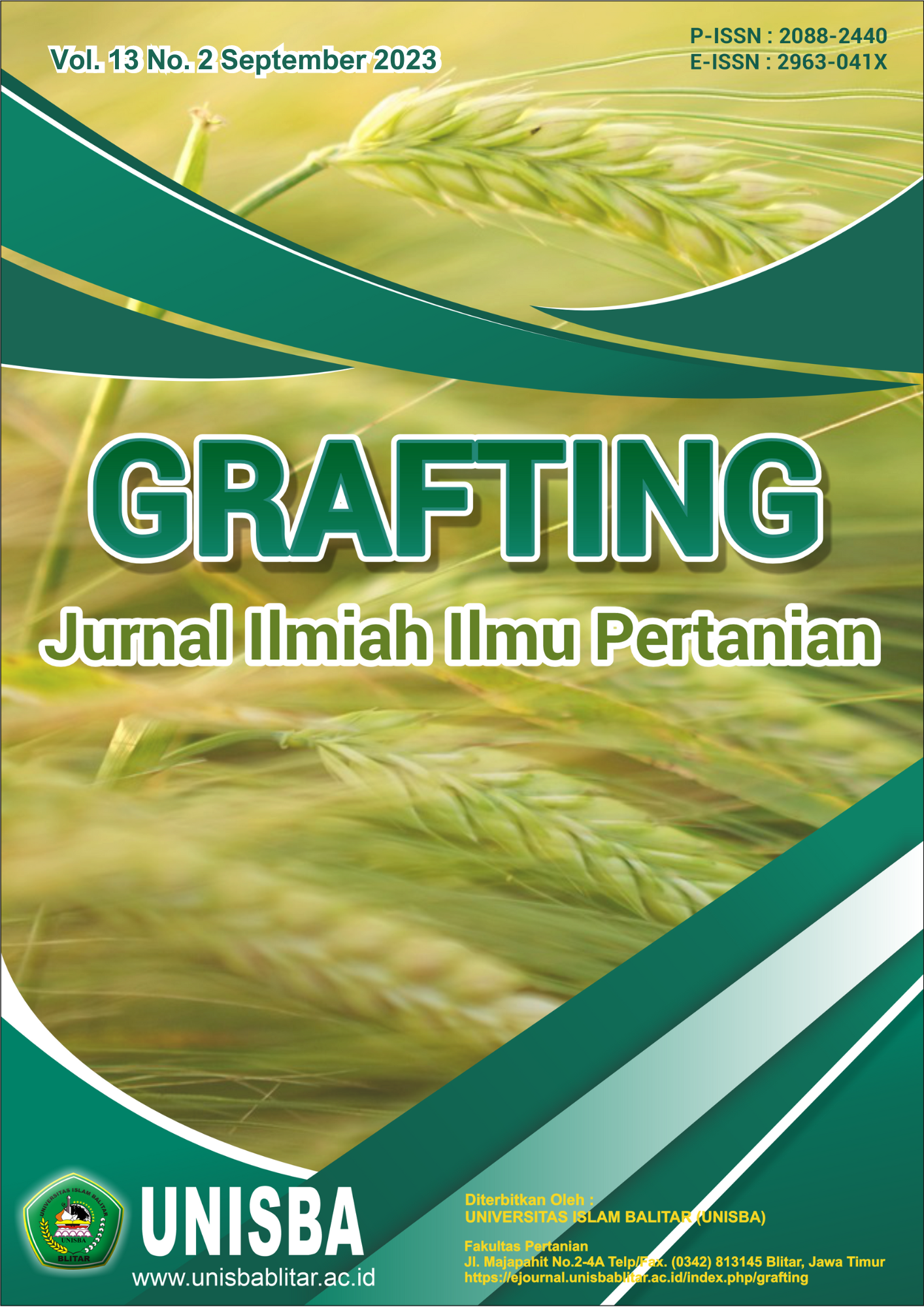EVALUASI PERTUMBUHAN DAN HASIL TANAMAN MELON (Cucumis melo L.) PADA 2 MACAM DESAIN GREENHOUSE UNISBA BLITAR
Abstract
The aim of the research is to determine the effect of differences in melon cultivation in two greenhouse construction designs which provide the best results on the growth and yield of melon plants (Cucumis melo L.). The research was conducted from July to September 2022 at the Balitar Islamic University of Blitar Greenhouse. The design used is a dependent analysis method which tests the relationship between independent variables. The analysis technique used is the parametric t-test. The t-test difference test was carried out on two category groups with the condition of two paired sample groups (paired sample t-test). The variables observed were plant height (cm), number of side shoots (strands), stem diameter (cm) and fresh fruit weight (gr). The results showed that the Greenhouse 1 (GH1) design provided an agro-climatic environment that was more in line with the environment needed by the melon plants significantly compared to the GH2 design so as to provide better melon plant growth and better yields. The average fruit fresh weight for melon plants cultivated in GH1 was 1008.52 grams of side shoots which was significantly better than in GH2 which was 968.32 grams.

This work is licensed under a Creative Commons Attribution-ShareAlike 4.0 International License.
Authors who publish with this journal agree to the following terms:
- Copyright on any article is retained by the author(s).
- The author grants the journal, right of first publication with the work simultaneously licensed under a Creative Commons Attribution License that allows others to share the work with an acknowledgment of the work’s authorship and initial publication in this journal.
- Authors are able to enter into separate, additional contractual arrangements for the non-exclusive distribution of the journal’s published version of the work (e.g., post it to an institutional repository or publish it in a book), with an acknowledgment of its initial publication in this journal.
- Authors are permitted and encouraged to post their work online (e.g., in institutional repositories or on their website) prior to and during the submission process, as it can lead to productive exchanges, as well as earlier and greater citation of published work.
- The article and any associated published material is distributed under the Creative Commons Attribution-ShareAlike 4.0 International License





